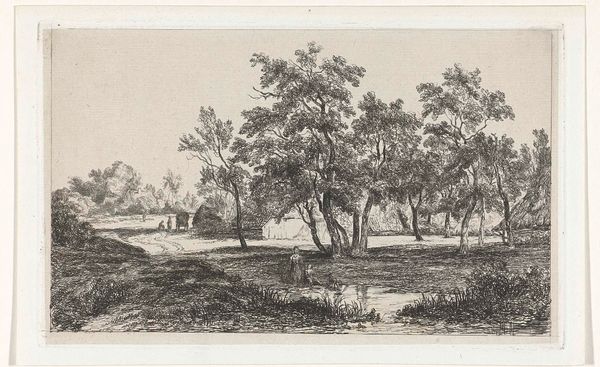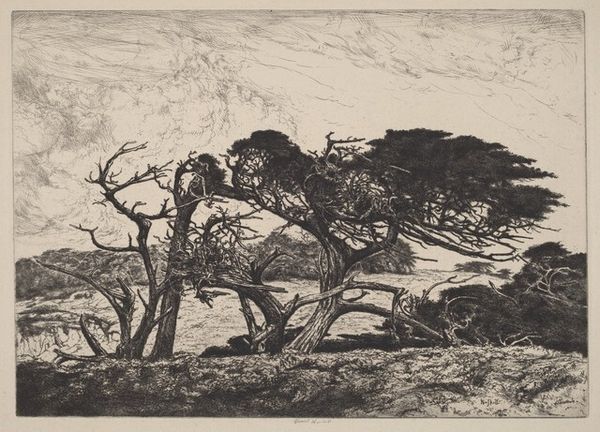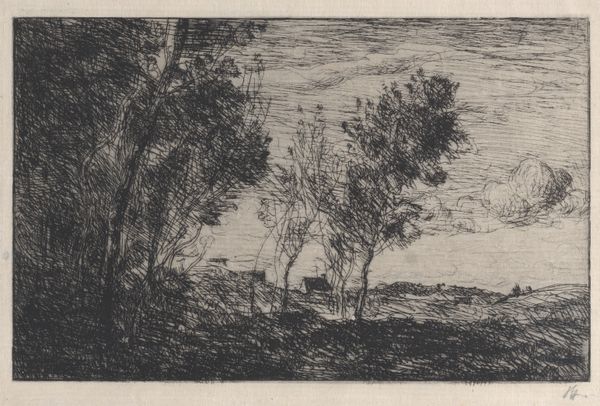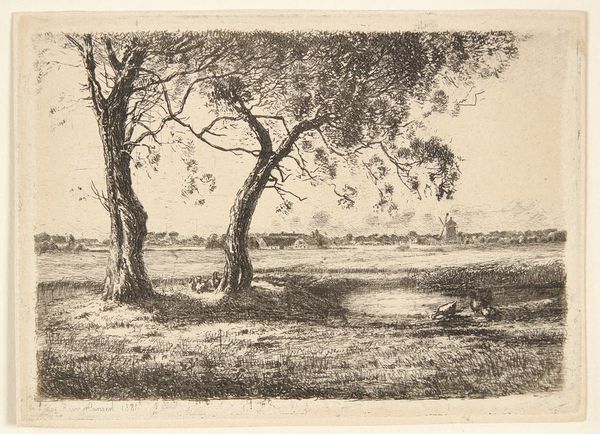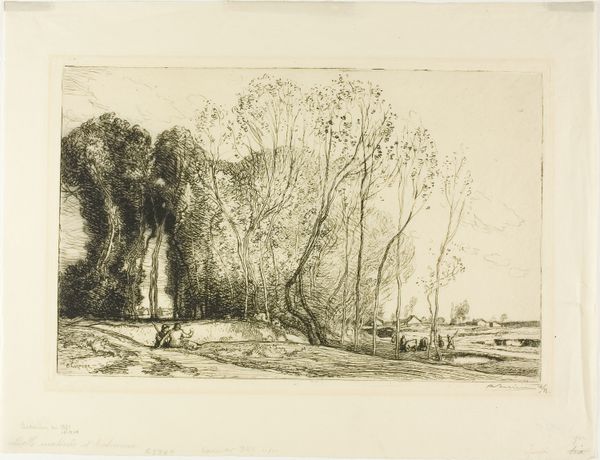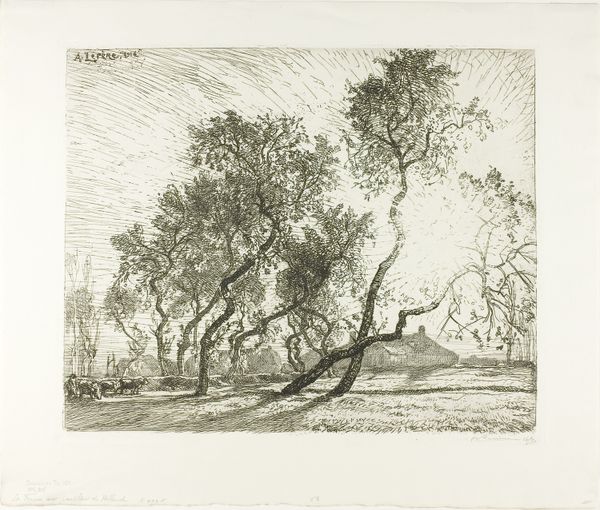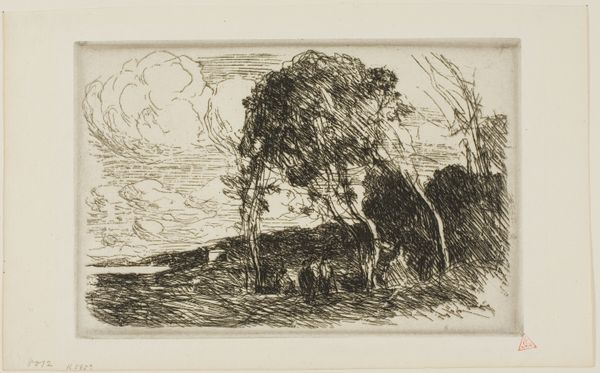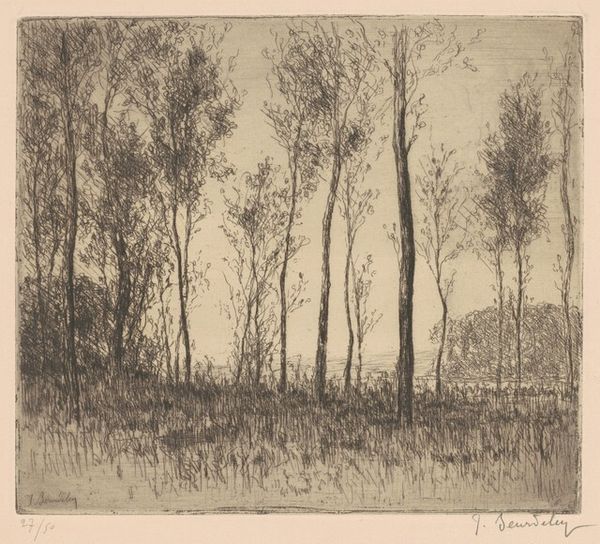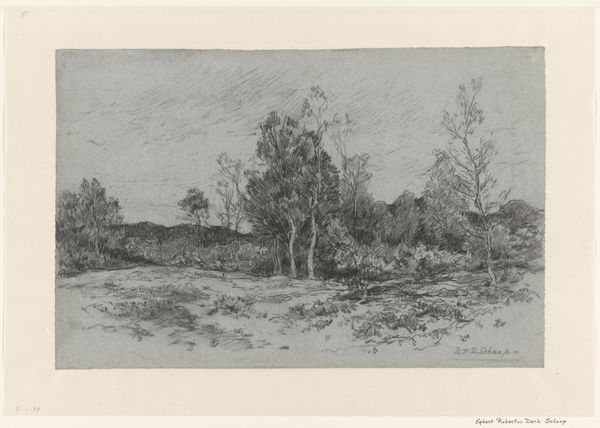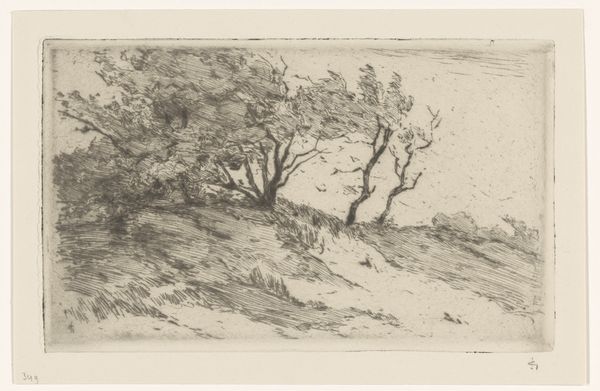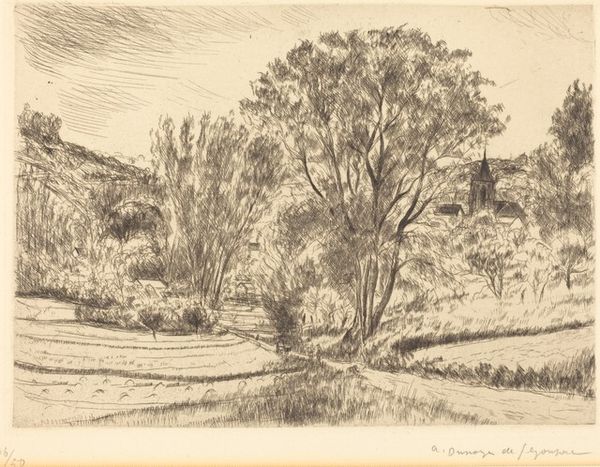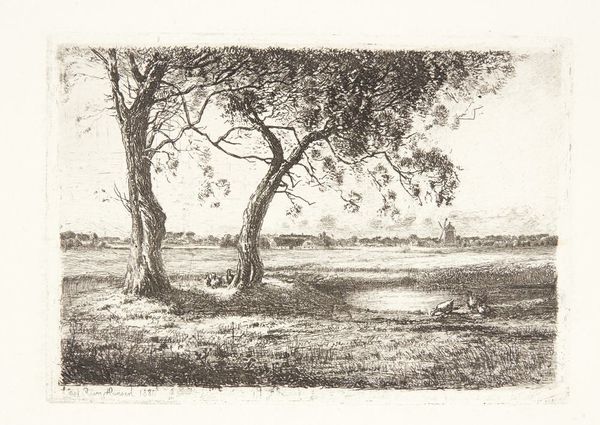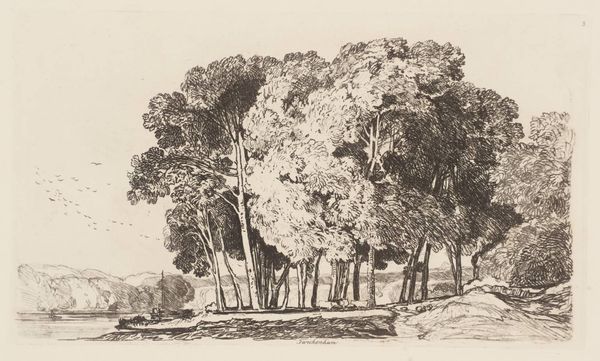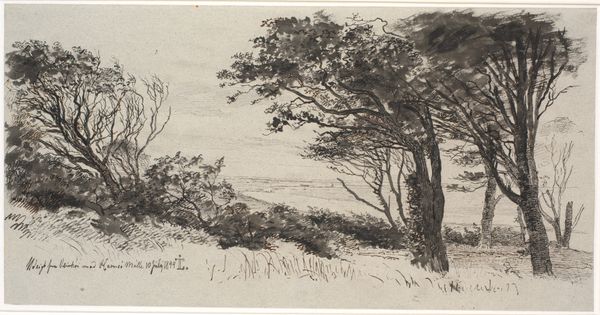
print, etching
# print
#
etching
#
landscape
#
figuration
#
realism
Dimensions: plate: 17.9 x 21.8 cm (7 1/16 x 8 9/16 in.) sheet: 23.2 x 29.2 cm (9 1/8 x 11 1/2 in.)
Copyright: National Gallery of Art: CC0 1.0
Editor: Here we have Roi Partridge's 1922 etching, "Al Bordo del Campo." It's a tranquil landscape, mostly greyscale, depicting trees framing a distant field with figures. What do you see in this piece that stands out to you? Curator: The symbolic weight carried by those trees is significant. The way they’re positioned almost as guardians – or perhaps witnesses – at the edge of this cultivated field makes me think of boundaries. Psychological boundaries, cultural divisions… The image suggests the borderlands between nature and human intervention. Does the treatment of light draw your eye anywhere in particular? Editor: The light does seem to be concentrated on the open field, which contrasts the shaded foreground. Almost like potential versus reality? Curator: Precisely. And what do the figures signify at the ‘edge’? Consider them in relation to the vast field. Are they part of nature or trying to manage it? There is, to me, something about the timeless quality of rural life. Perhaps a commentary on human nature. The human figure amidst those stark almost sentinel trees evokes emotional weight… solitude. Editor: It’s interesting how much symbolism is packed into such a seemingly simple landscape. I was only looking at it formally, but your interpretation adds layers. Curator: Indeed. The simplicity allows for these deeper meanings to surface. It's about visual language holding emotional continuity across the ages, what can be considered culturally important or traumatic. Editor: It's made me rethink landscape art completely. It's far more than just a pretty picture. Curator: Agreed. By recognizing visual patterns and recurring themes in various cultures we get a broader, unified context to view and appreciate works of art.
Comments
No comments
Be the first to comment and join the conversation on the ultimate creative platform.
